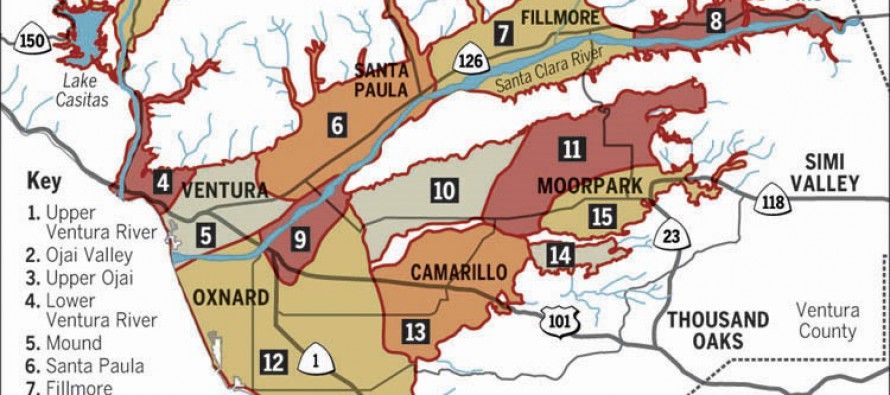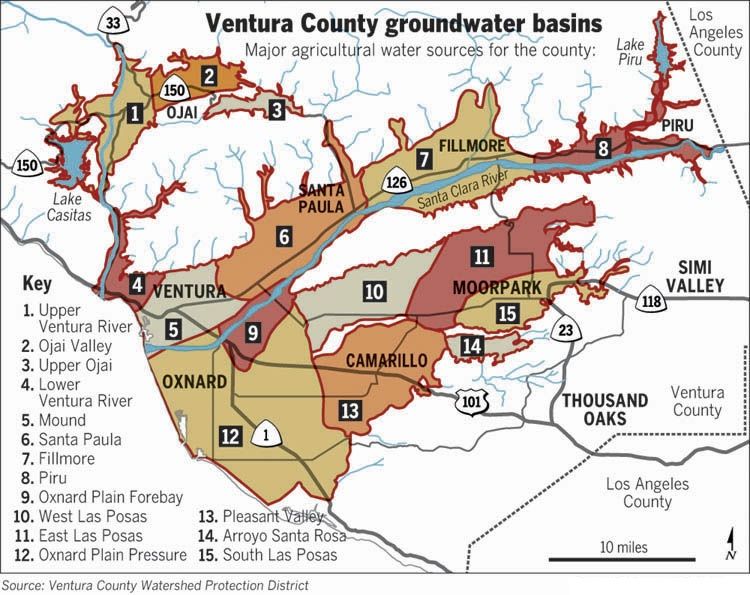Drought brings centralized groundwater control

 Was it necessary to pass three new bills that increase the California government’s control over groundwater? The numbers tell the story.
Was it necessary to pass three new bills that increase the California government’s control over groundwater? The numbers tell the story.
By now most Californians have heard the shockingly huge number: The state has lost 63 trillion gallons of water due to the drought that has hit since 2013. That is 193.3 million acre-feet of water, or almost one year’s average rainfall in California of 194 million acre-feet of water.
But there’s another number Golden Staters need to know: California has about 850 million acre-feet of water in its 450 groundwater basins. About half of that, 0r 425 million acre-feet, is usable due to natural and man-made contamination.
Of the 425 million acre-feet of water stored underground, farmers are estimated to have drawn down only by about 2.3 percent during the water year of 2014. (See calculations below.)
In fact, half of California’s groundwater basins are already managed or adjudicated. The other half are unmanaged but mostly are unconnected to the state water conveyance system.
Thus, groundwater regulation likely will offer little drought relief now or in the future and would not likely add any water for drought parched farms and cities.
Yet the small loss has been enough to justify the state Legislature passing, and Gov. Jerry Brown signing into law, three bills that will greatly increase centralized state control of groundwater:
‘Sustainability’
Senate Bill 1168 is by state Sen. Fran Pavley, D-Agoura Hills. It mandates:
“[G]roundwater resources be managed sustainably for long-term reliability and multiple economic, social, and environmental benefits for current and future beneficial uses. This bill would state that sustainable groundwater management is best achieved locally through the development, implementation, and updating of plans and programs based on the best available science.”
Although the bill seems to stress local control, it actually greatly will increase centralized state control:
“This bill would require all groundwater basins designated as high- or medium-priority basins by the Department of Water Resources that are designated as basins subject to critical conditions of overdraft to be managed under a groundwater sustainability plan or coordinated groundwater sustainability plans by January 31, 2020, and would require all other groundwater basins designated as high- or medium-priority basins to be managed under a groundwater sustainability plan or coordinated groundwater sustainability plans by January 31, 2022…”
Fees
Assembly Bill 1739 is by Assemblyman Roger Dickinson, D-Sacramento. It increases “certain fees” for water, which means the higher costs likely will be passed on to ratepayers:
“This bill would provide specific authority to a groundwater sustainability agency, as defined in SB 1168 of the 2013-14 Regular Session, to impose certain fees. The bill would authorize the department or a groundwater sustainability agency to provide technical assistance to entities that extract or use groundwater to promote water conservation and protect groundwater resources.”
It also would increase state control in other ways:
“This bill would require the [Department of Water Resources], by January 1, 2017, to publish on its Internet Web site best management practices for the sustainable management of groundwater, and would require the department to prepare and release a report by December 31, 2016, on the department’s best estimate of water available for replenishment of groundwater in the state.”
‘Designate’
SB1319 also is by Pavley. It involves what could be called “state regulation by designation.” It stipulates:
“This bill would additionally authorize the state board to designate certain high- and medium-priority basins as a probationary basin if, after January 31, 2025, prescribed criteria are met, including that the state board determines that the basin is in a condition where groundwater extractions result in significant depletions of interconnected surface waters.”
The subversion of local control by state control is emphasized:
“This bill would remove the authority of the local agencies to continue to implement parts of the plan or program that the board determines to be adequate and instead require the state board to include in its interim plan a groundwater sustainability plan, or any element of a plan, that the board finds either complies with the sustainability goal for that portion of the basin or would help meet the sustainability goal for the basin.”
Groundwater drought calculations:
- 850 Million Acre Feet total groundwater in California x 50% = 425 MAF usable groundwater;
- California uses 82.7 MAF/year on average, of which 10% is groundwater, or 8.27 MAF;
- In a drought year, California uses about 50% more groundwater, or 12.4 MAF (8.27 x 1.50 = 12.4 MAF);
- Agriculture uses about 80% of the 12.4 MAF, or 9.92 MAF;
- Thus, the percentage of 850 MAF total groundwater used by agriculture in a drought year would be 2.3% (9.92 MAF/425 MAF usable groundwater).
Related Articles
Records of lawmakers a step closer to transparency
A judge has found that the records of lawmakers can be subject to open records requests, making California one of 28
We’re all undocumented!
JUNE 24, 2010 By LAURA SUCHESKI California senators and assembly members gathered on the West Steps of the Capitol Wednesday
Californians Getting Railroaded
Katy Grimes: Regardless of cost, the Obama Administration is behind California’s plan to build a High-Speed Rail system, according to



